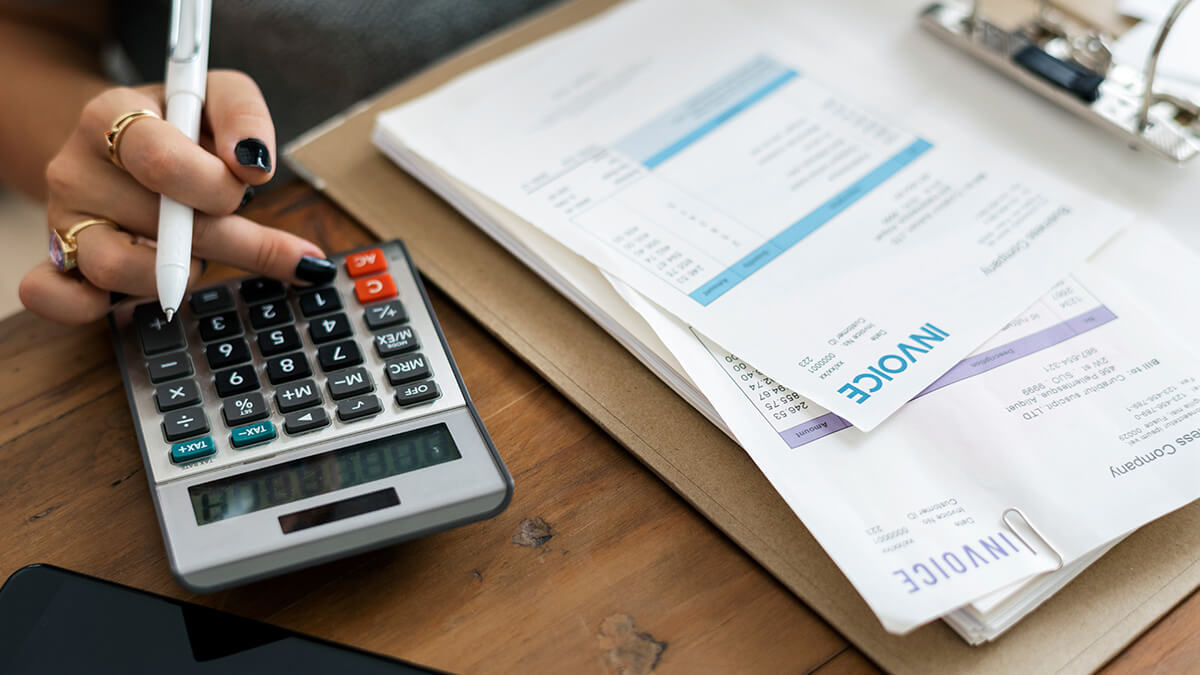A small business loan might not be the best option if your business needs short-term capital. Instead, look for funding solutions that are geared toward fast cash and low rates. Invoice factoring could help you manage cash flow during slow months without committing to long-term debt.
What is invoice factoring?
Invoice factoring for small business is a type of asset financing. It converts outstanding customer invoices due within 90 days into immediate cash. Your business gains short-term working capital by selling invoices to a factoring company. The factoring company gives you the amount of the invoices upfront, then collects payments from your clients.
What is a factoring company? An invoice factoring company (also called a factor) is a third party that offers working capital for unpaid invoices. To earn money, factoring companies charge businesses a factor fee.
The factoring company pays you for the invoice in two installments. First, you receive an advance equal to about 80% of the invoice amount. You receive the remaining 20%, minus factoring fees, after the customer pays the invoice.
Small business invoice factoring can also be called financing factoring or accounts receivable factoring.
How does factoring work?
Invoice factoring is a simple process. The steps for business factoring are the following.
1. You invoice your client
Once you provide a good or service to your client, you send them an invoice in order to get paid. The invoice should include payment terms that tell the client how to pay. If you want to use invoice factoring, the invoice must be due within 90 days.
2. You sell the invoice to a factoring company
You need to find a factoring company to work with. Then, you must apply for its services. The company decides whether you meet its requirements and conducts due diligence on your clients to check for creditworthiness. Once approved, you and the factoring company sign an agreement that says how much you can borrow.
3. You receive an advance
The factoring company pays you the advance rate equaling about 80% of the invoice amount. You or the factor might send a notice of assignment to your clients. The notice states that you have factored your invoices and the company will receive invoice payments.
4. Your clients pay the factoring company
When the invoice is due, the factoring company collects payments according to the invoice terms. The payments are kept in a lockbox (a designated account for factored invoice payments).
5. You receive the reserve amount
Once the factor receives payment for all the invoices, you receive the reserve amount, minus fees. The reserve amount should be about 20% of the factored invoices.
How much does invoice factoring cost?
The primary cost of using a factoring company is called the discount rate. Usually, the discount rate ranges from 0.5% – 5% of the invoice value per month, depending on your industry.
A lot of factoring companies offer a tiered system. The more invoices you factor per month, the lower your discount rate.
You will be charged the discount rate on a weekly or monthly basis. The length of time it takes customers to pay is a big factor in determining costs. The longer your invoice payment terms, the more discount rate payments you make. For example, if your customers have 30 days to pay, you pay the factor less than if the terms were 90 days.
Other invoice factoring fees
Some factoring companies charge hidden or extra fees in addition to the discount rate. Look out for these fees in your factoring agreement:
- Origination fee: This is an upfront cost for opening an account, and it can be up to $1,000.
Service or lockbox fee: This is a flat fee you might be charged to keep a lockbox open, and it could range from $50 to $500 per month. - Overdue fees: You might be charged this if the factor needs to put in extra effort to collect when a customer won’t pay. Some companies don’t charge for overdue invoices while others charge thousands of dollars.
- Monthly minimum volume fee: You might need to pay a certain amount of fees, and you could be charged up to $1,000.
- ACH transaction fee: You might be charged about $5 to $30 per transaction for every advance or disbursement issued.
- Credit check fees: These are small fees passed on to you to check the risk level of your clients.
Accounts receivable financing vs. factoring
Accounts receivable financing and invoice factoring are often used interchangeably. But, there are some differences between the business capital options. Knowing the difference between factoring and accounts receivable financing can help you determine the best short-term funding option.
Invoice factoring is the outright purchase of your accounts receivable. A factoring company buys your invoices and handles credit checks, mailing invoices, and collecting payments. With factoring, you can usually pick which invoices you want to sell.
Accounts receivable financing is similar to a traditional bank loan. But, collateral only includes business assets associated with accounts receivable. You can borrow about 80% of your qualified receivables. The invoice must be less than 90 days old, and the client must be creditworthy. You pay a collateral management fee of about 1-2% against the outstanding amount.
| Invoice Factoring | Accounts Receivable Financing |
|---|---|
| Offers more flexibility, you can choose which invoices to factor | Less flexible, must submit all your invoices |
| Easy to qualify for | Usually requires a minimum of $75,000 per month in sales to qualify |
| Simple fee structure | Less expensive than factoring |
Need an easy way to create and track invoices? Use Patriot’s online accounting software to manage unlimited invoices and pay your vendors. We offer free, USA-based support. Try it for free today.
This article has been updated from its original publication date of October 17, 2017.
This is not intended as legal advice; for more information, please click here.




